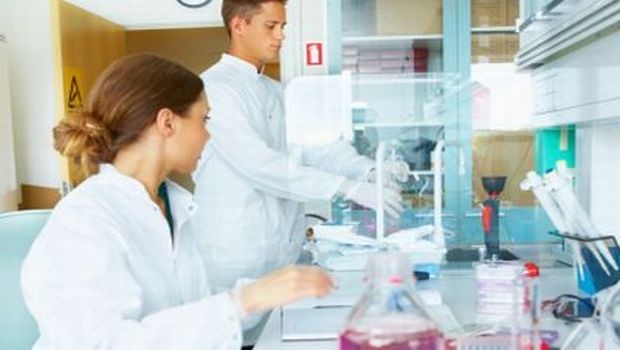Technology in a dietary supplement testing lab balances discoveries from thousands of years ago with cutting-edge information to fight adulteration and ensure safe products.

Upon cursory thought and/or guided by TV shows about forensics investigators, one might assume that technology in the dietary supplement testing lab is represented by shiny new futuristic equipment running novel test methods recently developed, which produce mind-shattering details about a test sample. While there might be a small amount of truth in there, the reality is that technology used in the dietary supplement testing lab frequently encompasses a collection of techniques developed more than 1,000 years ago, all the way to the present and not-so-far-off future. It is not uncommon to find spectroscopic equipment, similar to that used on the Mars Rover, in the average dietary supplement testing lab next to a reference text describing tests as simple as taste.
Early in my career as a botanical microscopist, I read about how the smell of a flower can be a useful characteristic and, when combined with others, can be used to identify genus and species of a botanical. So, I went outside and found a flower. Shortly after taking a strong whiff and enjoying the sweet, warm aroma, I brought the flower into the lab to observe the flower at a higher magnification. I used our Nikon Optiphot at 200-times magnification to zoom in on the array of florets of the asteraceae, only to realize that it was teaming, writhing in fact, with small, nearly translucent bugs. I was certain they were on their way to my brain, having just inhaled most of them. That was my first organoleptic experience.
21 CFR 111.75—the dietary supplement GMPs (good manufacturing practices)—states the tests and examinations that a supplement brand uses must include at least one of the following methods: gross organoleptic analysis, macroscopic analysis, microscopic analysis, chemical analysis or other scientifically valid methods. Clearly approved by FDA, gross organoleptic analysis, a technique using characteristics of taste, color, odor and feel of a substance, when utilized appropriately and correctly, can be an effective tool to identify plants. This technique was first coined by Pedanius Dioscorides around A.D. 60 in his book, “De Materia Medica." This method is still used today with little modification.
Next in line after a series of chemical tests is my favorite technique to identify botanicals: light microscopy. This technique is said to have been invented in the early 1500s. This method, also clearly approved by FDA when utilized appropriately and correctly, can be an effective tool to identify plants, and it is still used today with modifications only to the equipment (optics, lighting and precision), but not the method. As a practicing botanical microscopist, I am happy to admit that some of my best reference texts were published in the mid- to late-1800s.
In the early 1800s, Joseph von Fraunhofer made experimental advances with dispersive spectrometers and advanced spectroscopy to become a quantitative scientific technique, which continues to play a significant role in chemistry today.
Not far from his heels, Russian-Italian botanist Mikhail Tsvet refined the principle of chromatography. These two techniques got married and matured into HPTLC (high-performance thin layer chromatography) and HPLC (high-performance liquid chromatography), the most popularly used testing technologies for GMP compliance in laboratories today. HPTLC is the essential and most commonly used analytical tool to efficiently and accurately determine botanical identity and authenticate other raw materials. It is also the most globally accepted method for plant identity. HPLC is one of the most commonly used and accurate analytical technologies employed to identify and quantify specific compounds in a sample. HPLC is the primary tool used to determine purity, compare claims by raw material suppliers, determine degradation of actives, test shelf life of dietary supplements and verify a product’s contents for its nutrition label claims.
One of the newest technology being employed in today’s lab is FT-NIR (Fourier transform near-infrared) which stands on the shoulders of 200-year-old technology, but makes use of today’s advancements in computing power to produce a user- friendly technique for identifying botanicals with the lowest of educational entrance levels of all techniques.
DNA testing is also making its debut using technology from the late 1800s modified by equipment advances and computer power. The irony is that even the most technologically advanced equipment and methods of today and tomorrow stand on the shoulders of 200-year-old technology.
While adulteration has been around since the beginning of trade, it has taken on different shapes along its travels. Pedanius Dioscorides of A.D. 60 might have been concerned about developing a method to differentiate whole or powdered fennel from coriander. He literally wrote the book on this stuff. He knew about the methylhexanamine in his pre-workout drink, sibutramine being added to his lunch time diet tea and even vardenafil in his “special night time tea." Today, the culprits are moving targets, and they call for more advanced technology to detect the lowest specification set by regulators. Technology in the lab is in a constant race with adulteration, and a successful lab must embrace the new, but not forget about the riches of past techniques.
To stay on top of the latest technologies and techniques to ensure safe practices and quality products, visit INSIDER’s Lab Insights Content Library.
Élan Sudberg is CEO of Alkemist Labs, an analytical testing lab. He holds a degree in chemistry from California State University Long Beach, and has authored numerous journal articles on phytochemistry and analytical techniques for the natural products and nutraceutical industry. He is a board member of the American Herbal Products Association’s (AHPA) Education and Research on Botanicals Foundation and is the chair of the Hemp and Medical Marijuana committee.
About the Author(s)
You May Also Like




.png?width=800&auto=webp&quality=80&disable=upscale)